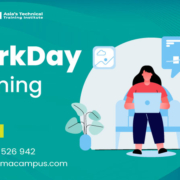Advantages and Applications Of Python: The Most In-Demand Language
If you are new to programming and asking which language to choose, this guide is for you. You may already be coding, yet want to discover the most adaptable programming language. You’d find a better choice than Python. Because Python is simple to learn and has numerous uses, students and organizations worldwide consider it the primary language for programming.
If you are studying or have coding tasks, learning Python can help you perform much better at college and work. If you find programming assignments are getting difficult, programming assignment help platforms are available to offer expert programming assignment services.
What is Python?
Python is easily recognised for its simple, flexible, and easy-to-read syntax. The creator, Guido van Rossum, aimed to release Python in 1991 to make programming an easy skill to learn for anyone eager to begin.
While other programming languages seem hard to understand, Python uses a style nearly identical to English. So, you can grasp, make, and fix code easily, even early on in your computer science studies.
The reach of Python has expanded today; it is widely used for web development, data science, artificial intelligence, automation, cybersecurity, and robotics. Because many industries use Python, it is a beloved subject in colleges and companies.
Why is Python Such an Important Programming Language?
Python is now recognised as one of the strongest programming languages, and this achievement is not due to luck. Because it is both powerful and easy to use, Python can be used by students or experts.
Here are the reasons why Python plays such an essential role in the world of technology and education everywhere:
- Python saves you from writing extensive code to accomplish any small thing. What Java programmers write in 20 lines can generally be expressed in only 5 or 6 lines by using Python.
- Depending on your needs, you can write programmes in Python according to object-oriented, functional, or procedural approaches.
- From Pandas and NumPy for data, Django for applications, and TensorFlow for machine learning, there is a great variety of tools in Python’s ecosystem.
- If you feel like you are stuck, many learners feel the same. There are many online communities and lots of open-source contributors who can support you with any problems.
- Regarding AI, machine learning, and data analytics, Python is the standard language, making it attractive for learning and profitable in a career.
Struggling to finish your Python assignments? Seek expert programming assignment help from a professional.
The Benefits of the Python Programming Language
Here are the top ten benefits that make Python your most reliable friend in programming.
- Easy to Learn and Use: Since Python’s syntax is similar to English, learning and writing code as a beginner is far simpler than in other languages.
- Multiple Libraries and Frameworks: Python has a vast ecosystem with NumPy, Pandas, and TensorFlow available, making it easy for developers and students to complete tasks more quickly and efficiently.
- Highly Versatile: Python is always a good fit, whether you are building a web design, script automation, or data analysis.
- Strong Community: Have a problem that you can’t solve? There is a vast and supportive community of professional developers, coders, and students using Python worldwide to help you.
- Portability: You can use Python on any operating system. You can run your programme on any operating system with any modifications.
- Open Source: Python is freely available; you can use it, change it, and share it without license problems.
- Can Be Used in Different Research Approaches: You can use Python for object-oriented, procedural, or functional programming.
- Ideal for creating prototypes: Python’s simplicity lets users quickly check out new ideas and features.
- Many Academic Institutions and Companies Apply It: Whether you are a student working on your assignment or a developer working in business, Python is used everywhere.
- High Demand in Job Market: Python expertise helps people find great jobs in data science, web development, AI, and similar fields.
Disadvantages of the Python Programming Language
Python is not free from problems; just like other languages, it has disadvantages.
- The Operation Takes A Longer Time: Because it is interpreted, Python usually isn’t as fast as C++ and other compiled languages.
- Mobile App Development Has Its Limitations: Python is not an ideal choice for mobile application development.
- High Memory Usage: Python does not handle both memory and processing tasks at their highest efficiency.
Still, Python has many more benefits than flaws and benefits students.
The Applications of the Python Programming Language
Python is being used in many industries, and its usage keeps increasing. Check out the 10 areas where Python is applied:
- Web Development: Web applications can be built quickly and securely using frameworks such as Django and Flask.
- Data Science: Most data analysts choose Python when analysing, visualising, and working with data.
- Machine Learning & AI: Python is the core of modern artificial intelligence applications, all thanks to its libraries like Scikit-learn and TensorFlow.
- Automating Tasks: Automating your tasks in Python is very easy and can free up your time and energy.
- Game Development: Python can be used for game prototyping using Pygame and other basic frameworks.
- Cybersecurity: With Python, you can make security tools, check for malware, and create intrusion detection systems.
- Software Testing: Python is often used to create testing tools and automate test scenarios.
- Education: Because it is so simple, Python is often chosen for teaching in classes and tutorials.
- Finance and FinTech: Risk management, investment analysis, and algorithmic trading systems use Python.
- Internet of Things or IoT: MicroPython and Raspberry Pi have made Python important for developing IoT applications.
Organizations Using Python
Tech companies and startups alike are fascinated by Python’s wide range of uses. Important organisations that rely on Python are:
- Google: For all their customised versions and APIs.
- Netflix: Uses it for automation and data science.
- NASA: For scientific computing and computerised functions for space missions.
- DropBox: Uses Python to create its desktop application.
- Instagram: Django is a Python framework for backend use.
Why Do Students Opt For Programming Assignment Help?
We all know that tackling a programming assignment is not easy due to its complexities. That is why most students opt for programming assignment help to get professional assistance from programming assignment writers. If you are struggling with programming errors or getting too far behind, then Quick Assignment Hub is ideal. Their programming assignment services are trusted by thousands of students worldwide. Here are some of the reasons why students choose assignment solutions:
- Programming assignment expert: The platform has a team of experts with PhD degrees who are well acquainted with solving even the most challenging programming problems.
- Custom Assignment: The programming assignments are tailored by programming assignment experts per your requirements.
- On Time Delivery: Their service guarantees on-time delivery and ensures that your assignment submission deadlines are not missed.
- Original Assignment: The programming service writers ensure that the assignments are drafted from scratch and maintain 100% originality.
Final Thoughts
Working on Python assignments doesn’t just prepare you for coding; it builds the foundation for new careers and exciting innovations. Python can help you take your first steps toward working as a data scientist, web developer, or machine learning engineer. Don’t try to run before you master walking; practise often and consult anybody if you get stuck.
If you are stressed about programming, seek assistance from programming assignment writers for expert help from Quick Assignment Hub.










